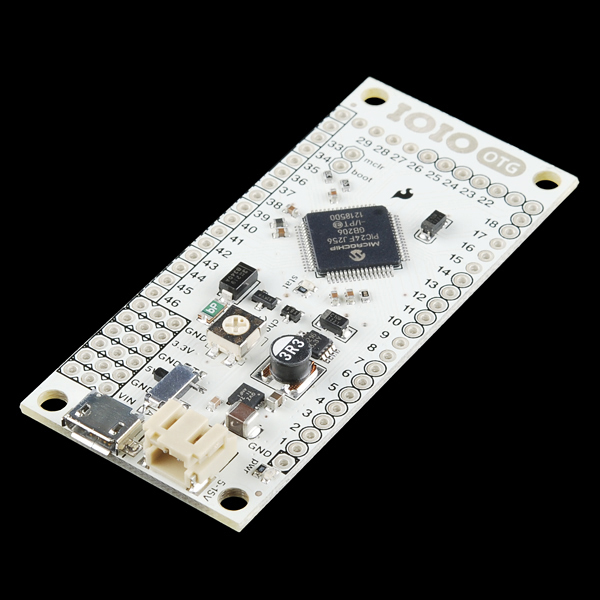IOIO-OTG: Android + physical computing
The IOIO-OTG is finally here!

IOIO-OTG
In short, this development board allows you to interface with the physical world (sensors, actuators) using an Android device as the computational brain. The major improvement between this and the 1st/original IOIO board is that the IOIO-OTG can also interface with your Windows, Linux or OS X machine, and soon with the RaspberryPi (under “Coming Up”).
It’s a rather capable I/O board, featuring:
- USB-OTG dual-role (host, device).
- Input voltage: 5V-15V, from external source or through USB (when connected to a computer).
- Output voltage: 5V, up to 3A (!), 3.3V, up to 500mA.
- 46 I/O pins (digital I/O), built-in pull-ups / pull-downs / open-drain on all pins.
- 16 Analog inputs.
- 9 PWM (for driving servos, DC motors, dimming LEDs, etc).
- 4 UART.
- 3 TWI (I2C, SMBUS).
- 3 SPI.
- 6 Pulse Input (precise pulse-width / frequency measurement).
- USB current limiting when acting as USB host (useful in Android mode).
- Switch for forcing host mode (for using non-standard USB cables, which are more common than the standard ones…)
- On-board LED under user control.
Here’s everything you need to know:
- Ytai Ben-Tsvi: Google employee, lead developer of IOIO
- IOIO on GitHub: the main code repository
- IOIO on Sparkfun: where to buy the hardware
- Ytai’s IOIO Gallery: collection of IOIO-based projects and posts, curated by Ytai
- MIT MediaLab IOIO party: results of a recent IOIO Hack-a-thon
LIKE